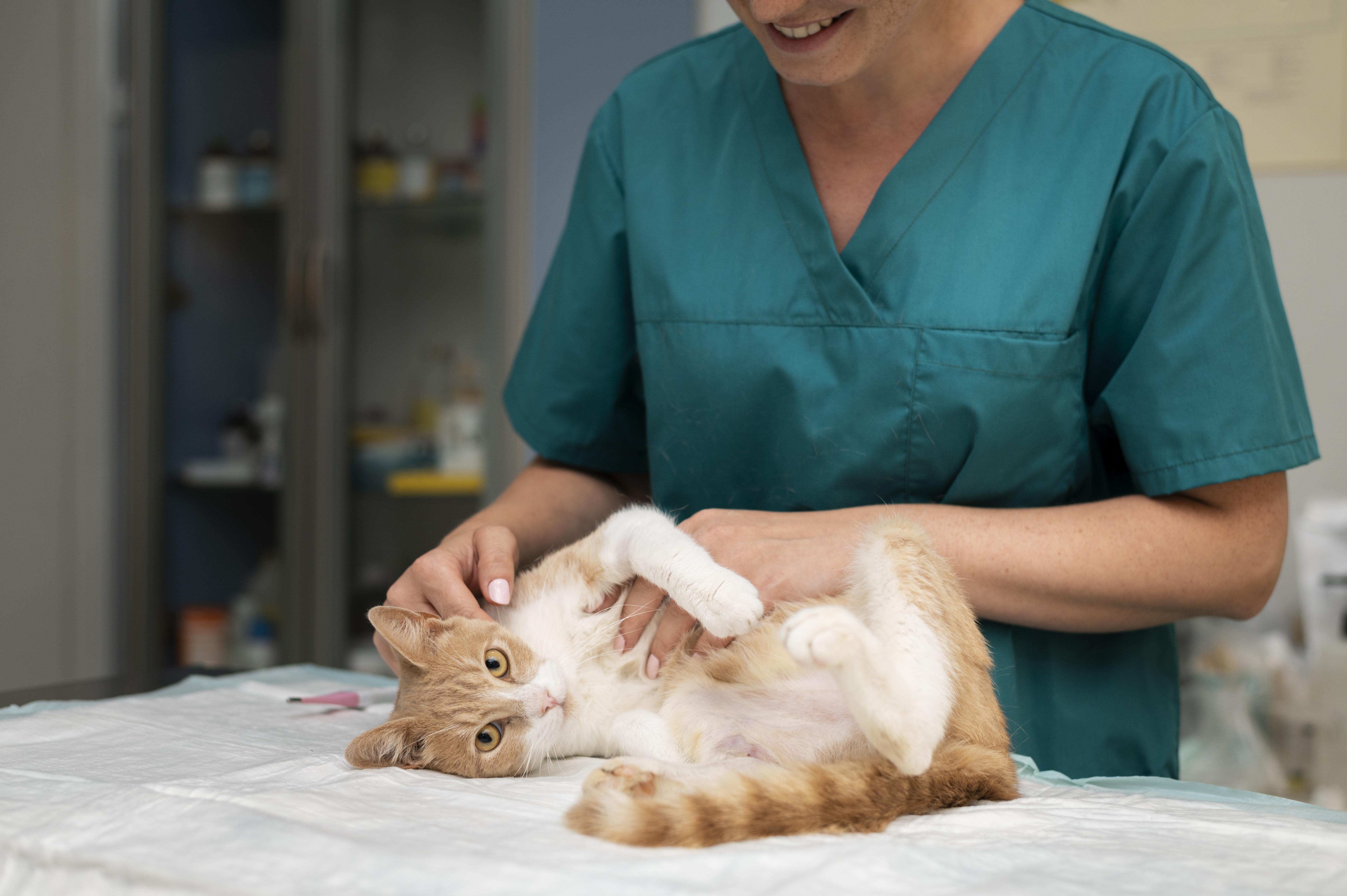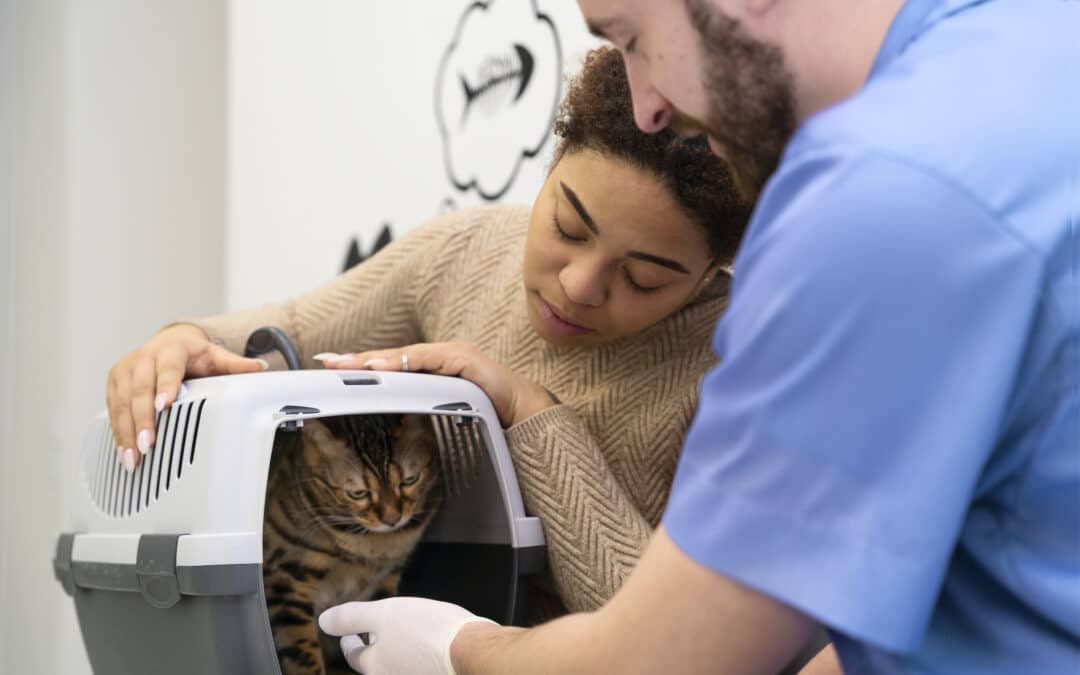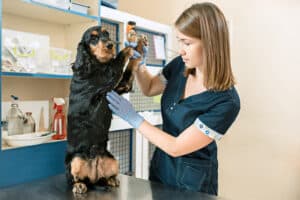Cats are masters at hiding discomfort, signaling when something’s off might require a closer look. Whether it’s unusual behavior or changes in daily habits, these could be clues your feline friend is in distress, possibly needing medical attention.
Gabapentin for cats has emerged as a versatile solution. What does gabapentin do for cats? While initially designed for humans as an anticonvulsant, it is now repurposed to ease anxiety, seizures, and pain in pets.
This guide will discuss how the gabapentin dose for cats can help manage their discomfort, detailing the proper amount for effective relief without compromising their health or well-being.
Gabapentin is used in cats to manage chronic pain, control seizures, and reduce anxiety, especially during vet visits. The dosage varies, typically ranging from 1.5 to 5 mg per pound for pain relief, 2.5 to 5 mg per pound for seizures, and 20 mg/kg for anxiety before vet visits. Side effects may include lethargy, incoordination, vomiting, and decreased appetite. Following a veterinarian’s guidance for the correct dosage and monitoring for any adverse reactions is essential.
What is Gabapentin for Cats?
Table of Contents
Gabapentin is a versatile medication initially designed for humans to control seizures. Now, it’s widely used in veterinary medicine to manage chronic pain, especially neuropathic pain, and to treat seizures in pets. Interestingly, it’s also effective for calming anxiety and stress in cats, particularly during vet visits.
Although not FDA-approved for pets, veterinarians prescribe it off-label due to its efficacy and instant effect. When considering gabapentin for cats, following a vet’s guidance is crucial, as the dosage varies based on the cat’s specific needs and health condition.
What is Gabapentin Used for in Cats?
Gabapentin for Cats is primarily recognized for its role in managing various feline conditions. It has proven effective beyond its original use, offering relief for neuropathic pain and acting as a supportive therapy in managing seizures and chronic conditions in cats.
Its application extends to easing anxiety, particularly during transport to veterinary visits, enhancing the well-being of felines under stress. A study involving 47 hyperthyroid cats revealed that cats receiving a gabapentin dose of 20 mg/kg were notably more relaxed during transport and compliant during veterinary procedures.
This outcome underscores gabapentin’s effectiveness as an anxiolytic, showcasing its ability to reduce stress and improve compliance in clinical settings significantly.
Gabapentin offers relief for cats in several ways:
- Managing chronic pain: Gabapentin aids in managing chronic and neuropathic pain in cats, especially post-surgery, like declawing, ensuring comfort and recovery by enhancing other pain relievers’ effects for comprehensive pain management.
- Treating seizures: For controlling epilepsy, gabapentin is used with other anticonvulsants, offering an additional layer of seizure management for affected cats.
- Reducing anxiety and stress: It significantly reduces anxiety and stress, making stressful situations like vet visits more manageable for cats, leading to a smoother and less fearful experience.
Gabapentin Dosage for Cats

Determining the correct gabapentin dose for cats is crucial and should be guided by a veterinarian. The dosage varies depending on the condition being treated, such as seizures, pain, or anxiety.
Monitoring for side effects and adjusting the dose as needed is essential. Proper dosing ensures the safety and well-being of your cat, making gabapentin a valuable tool in managing their health issues effectively.
Here’s a breakdown of the recommended dosages for different scenarios:
- Seizure: For seizure management, gabapentin dose for cats ranges from 2.5 to 5 mg per pound every 8 to 12 hours, potentially increasing to 10mg per pound in more severe cases, ensuring effective seizure control.
- Pain Relief: In treating pain, the dosage starts at 1.5 to 5 mg per pound every 12 hours. For intense pain, such as from cancer or arthritis, dosages may rise to 50 mg up to three times daily for adequate relief.
- Anxiety: To alleviate anxiety, particularly for vet visits, administering 20 mg/kg of gabapentin 1-2 hours beforehand significantly eases stress symptoms, facilitating a smoother experience for cats and reducing their owners’ worry.
Potential Adverse Reactions to Gabapentin in Cats
Gabapentin for Cats is a versatile pet medication used to manage pain, seizures, and anxiety in felines. However, like any drug, it comes with potential side effects and requires careful consideration and guidance from a veterinarian to ensure it’s administered safely and effectively.
Potential Side Effects
- Lethargy: Cats may become unusually tired and show less interest in daily activities or play, indicating the sedative effects of Gabapentin.
- Wobbliness/Incoordination: Affected cats might struggle with balance and coordination, making movements clumsy and potentially leading to falls or accidents.
- Vomiting and Decreased Appetite: These gastrointestinal issues can lead to dehydration and weight loss if not addressed promptly by a veterinarian.
- Behavioral Changes: Uncharacteristic behaviors such as increased meowing or aggression can be distressing and may require dose adjustments.
Precautionary Measures
- Regular Monitoring: Close observation for adverse reactions helps ensure the well-being of your cat, allowing for timely interventions if needed.
- Dosage Adjustments: Tailoring the dose to your cat’s specific needs can reduce the risk of side effects, enhancing the medication’s benefits.
- Avoid Certain Conditions: Cats with specific conditions like allergic, hypersensitive, pregnancy, fever, or on certain medications may require extra caution or a tailored approach to using Gabapentin.
Always consult a professional vet before treating your cat, especially if you’re unfamiliar with the medication and its process. This ensures your feline friend receives the best care while minimizing risks.
Frequently Asked Questions
Can you just stop gabapentin in cats?
Abruptly stopping gabapentin in cats, especially those treated for epilepsy, can lead to withdrawal seizures. It’s crucial to gradually taper off the dose under veterinary guidance to avoid adverse effects.
Is gabapentin bad for cats with kidney disease?
Cats with chronic kidney disease (CKD) exhibit higher serum concentrations of gabapentin, indicating a need for dose adjustment. It’s essential to administer lower doses to avoid potential toxicity and monitor their response closely.
How long can a cat stay on gabapentin?
Cats can remain on gabapentin indefinitely, particularly for chronic conditions like arthritis. Long-term use is part of many cats’ pain management plans, with regular veterinary oversight to monitor for potential side effects or necessary dosage adjustments.
Use Gabapentin Under Careful Guidance
Gabapentin for Cats has emerged as a versatile medication, offering relief from chronic pain, managing seizures, and reducing anxiety in our feline friends. Having explored its uses, dosages tailored for different conditions, potential side effects, and the importance of cautious administration, you are now better equipped to determine whether your pet needs it.
While gabapentin is safe for cats when used correctly, following veterinary guidance closely is crucial. If you have questions or concerns about using Gabapentin for your cat, don’t hesitate to contact Paoli Vetcare for expert advice and support and to schedule an appointment.








